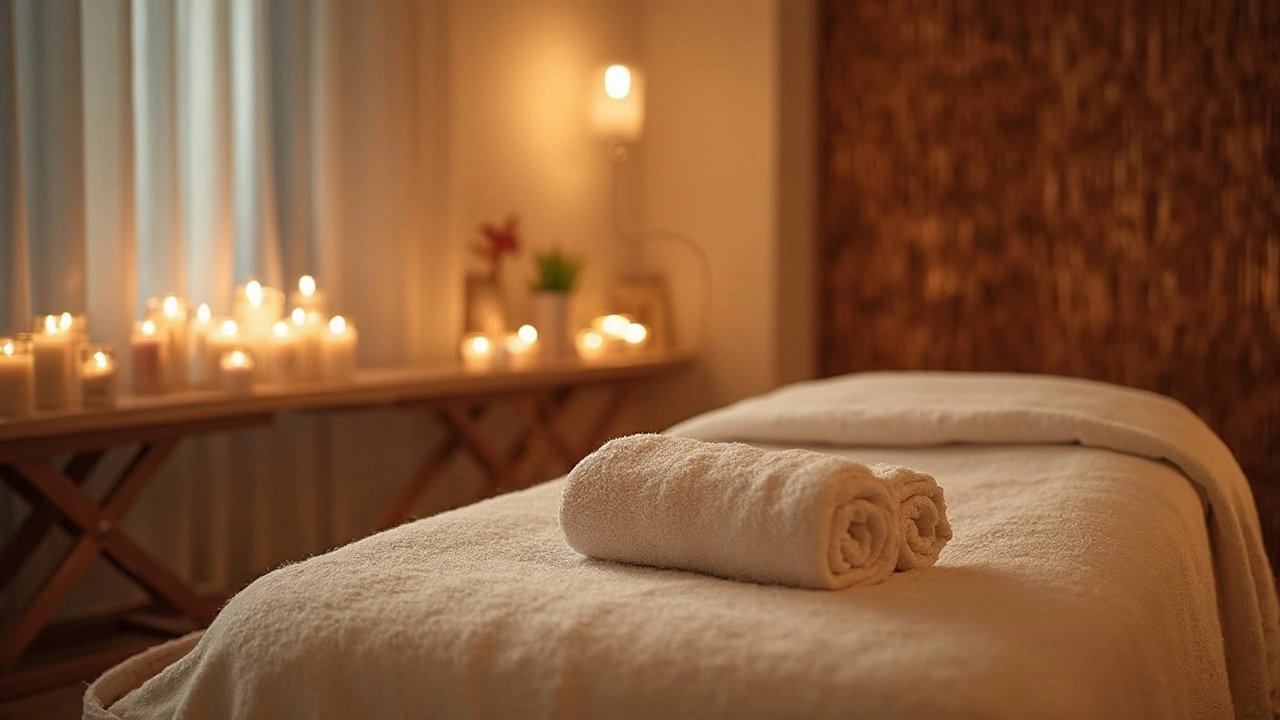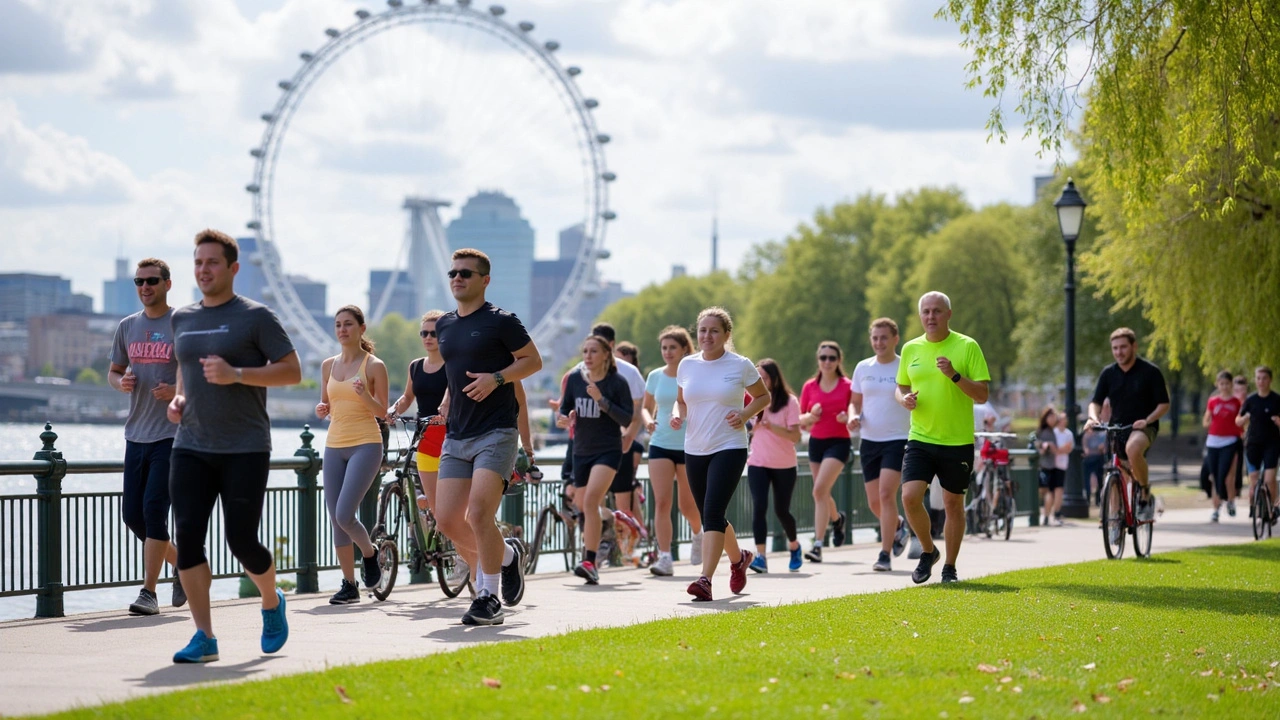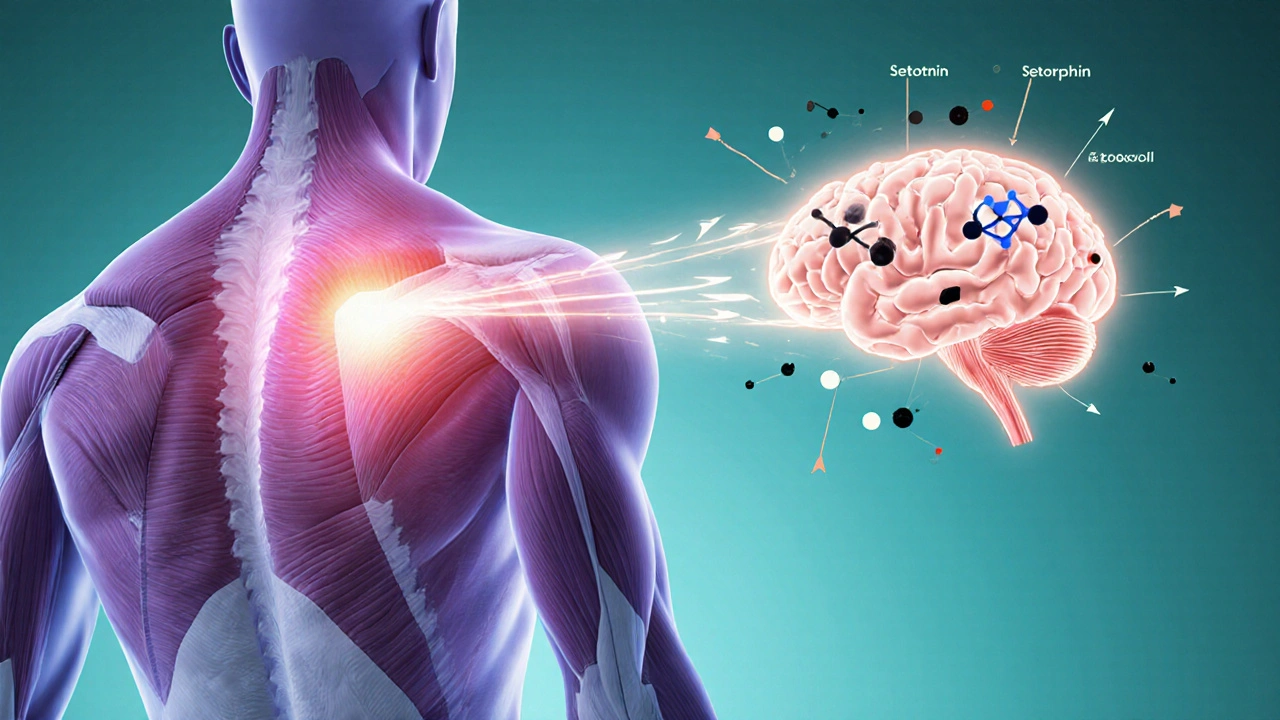Deep Tissue Massage: Why Book One Today for Real Results

Got muscle knots that linger no matter what you try? Or maybe your neck and shoulders are locked up from hours at a computer. Deep tissue massage can do more than just relax you—it digs into the root of the problem and deals with built-up tension that basic rubdowns just skip over.
This isn’t about fluffy spa music and gentle strokes. Deep tissue massage means targeted pressure, moving slowly across layers of muscles and connective tissue. The idea is simple: break up tight spots, improve blood flow, and help your body finally let go of that stubborn pain.
Plenty of folks avoid booking because it sounds intense, but the pressure is totally adjustable based on what you can handle. Professionals check in so you’re not just gritting your teeth, hoping it’s over. And here’s the thing—most people walk out feeling lighter, with less pain and more freedom to move.
- What Really Happens in a Deep Tissue Massage
- The Science Behind the Pressure
- Benefits You’ll Feel (and Not Just Relaxation)
- Smart Tips for Your First Deep Tissue Session
- Common Myths and Real Truths
- How to Make Results Last
What Really Happens in a Deep Tissue Massage
So what’s actually going on when you get a deep tissue massage? Here’s the deal: you’ll usually start on a comfy table, face down first. The therapist might ask you about any problem areas, old injuries, or daily habits that could be messing with your muscles. Unlike a gentle Swedish massage, expect them to target tight spots using slow strokes and pretty firm pressure, sometimes even using elbows or forearms.
This type of massage is all about getting under the surface. Your therapist works layer by layer, starting shallow and gradually working deeper into tough knots and muscle fibers. They may pause and hold pressure on stubborn trigger points—the annoying spots that make you flinch when pressed. You’ll probably notice they’re spending more time on specific spots instead of doing quick passes all over.
It’s not like getting your back cracked or stretched around; instead, it’s methodical and steady, focusing on muscles, tendons, and fascia—the stuff around each muscle group. They’ll check in often, adjusting their pressure so you’re not in pain, but you can expect a bit of "good hurt"—that feeling where it’s kind of intense, but you want them to keep going.
Some real facts: deep tissue massage doesn’t leave you bruised when done by a pro, and it isn’t supposed to hurt the next day like you ran a marathon. What you might notice is warmth, looser muscles, and even a bit of tiredness from finally letting tension go. If your therapist hits a trigger point, you might feel a "referred" ache in another area—this is normal and means they found a spot where nerves and muscles connect.
Don’t be shy about speaking up during the session. Tell your therapist if it’s too much or if something feels weird. The whole point is to work together so you walk out feeling better—and every body is a little different when it comes to pressure. That open feedback sets you up for results, not regrets.
The Science Behind the Pressure
Ever wonder what’s actually happening when someone digs their thumbs deep into your back? It’s not just about brute force. During a deep tissue massage, therapists target the inner layers of muscle and fascia (that’s the thick tissue surrounding your muscles). The pressure stimulates blood flow and sends a signal to your brain to relax tight spots.
The magic is in how slow and steady the strokes are—by going layer by layer, therapists can break up stubborn adhesions (dense knots or scar tissue). Your body responds by sending fresh blood to those areas, boosting oxygen and nutrition that your muscles crave after sitting, working out, or hunching all day.
Studies have found that deep tissue massage can lower blood pressure and reduce levels of the stress hormone cortisol. In fact, one 2014 meta-analysis tracked over 120 participants and noticed a significant dip in their systolic and diastolic blood pressure after a course of deep tissue treatments.
| Massage Effect | Average Result |
|---|---|
| Blood Pressure Drop | Up to 5.3 mmHg (Systolic) |
| Lowered Cortisol | About 30% reduction |
| Muscle Fiber Flexibility | Measurable increase after 4 sessions |
But here’s something most folks don’t realize: when those deep strokes “hurt so good,” they’re talking to your nervous system. The body releases endorphins (basically nature’s painkillers) and serotonin, lifting your mood and dialing down pain. That’s why walking out of a session, you usually feel both physically loose and mentally clear.
Benefits You’ll Feel (and Not Just Relaxation)
Deep tissue massage goes way beyond just helping you chill out. Sure, you’ll relax, but the real magic comes from what’s happening under the skin. The massage works into the deeper layers of muscle and connective tissue—the stuff that stores tension, stiffness, and pain.
The top reason people come back for deep tissue massage is pain relief. If you’ve got chronic back pain, sore shoulders, or a neck that never seems to loosen up, breaking up those muscle knots can give real results. A study published in “Scientific Reports” (2014) found that people with chronic back pain had way less pain and better mobility after just a few sessions compared to standard treatments.
But there’s more. Stubborn soreness after workouts? Deep tissue helps by flushing out toxins and bringing fresh blood into tight areas, which helps you recover faster. That’s why it’s a favorite among runners and gym regulars.
Got stress? Deep tissue massage kicks your body out of fight-or-flight mode and helps lower your cortisol levels—a hormone that spikes when you’re stressed. One clinical review showed a big drop in both anxiety and blood pressure after regular treatments.
- Improves range of motion for stiff joints
- Cuts down on headaches, especially tension headaches
- Reduces inflammation in problem areas, like sore knees or lower back
- Makes it easier to sleep (people report fewer restless nights afterward)
Worried it’s just hype? These numbers sum things up:
| Benefit | Reported Improvement (%) |
|---|---|
| Pain Relief (Chronic Back Pain) | 72 |
| Better Movement/Flexibility | 68 |
| Improved Sleep | 59 |
| Reduced Stress/Anxiety | 54 |
Bottom line? Booking a deep tissue massage isn’t just a treat. For a lot of folks, it’s a real tool for handling pain, fighting stress, and getting back to moving the way you used to before life and work tightened everything up.

Smart Tips for Your First Deep Tissue Session
First time booking a deep tissue massage? Don’t worry—it’s way easier to get the most out of your session with a little planning. A few smart moves ahead of time make things smoother and way more effective.
- Drink water before and after. Hydration helps your body flush out the stuff released from those tight muscles. If you skip this, you might feel sore for longer.
- Speak up about pain and pressure. Your massage therapist isn’t a mind reader. Let them know if something feels too intense—or if you actually want a little more pressure. You’re in control here.
- Show up early. Arriving 10 minutes ahead gives you time to fill out any paperwork, calm down, and settle in. Rushing in late can ramp up tension, which defeats the point.
- Skip the heavy meals. You don’t want to lie on a full stomach while someone’s pressing on you. Grab a light snack instead if you’re hungry.
- Wear loose, comfy clothes. Some places want you to undress to your comfort level. Stick with what feels good, and change back into relaxed clothes afterward.
If you feel a bit tender after, that’s normal—like post-workout soreness. A warm shower or a little stretching can help. Following these tips gets you ready to relax and actually benefit from the session, so you don’t just walk away with sore muscles and no gains.
Common Myths and Real Truths
People like to talk about deep tissue massage like it’s some wild sports ritual or a pain-filled challenge. The real story is a lot less dramatic, and way more helpful than most expect. Let’s clear up the confusion and set things straight with what actually goes down.
- Myth: Deep tissue massage has to hurt or it isn’t working. Truth: Pain isn’t proof. Sure, you’ll feel pressure, but if it’s really painful, it’s not being done right. A good therapist wants you to speak up if it’s too much. Actual muscle release happens at the edge of comfort, not in agony.
- Myth: Only athletes or bodybuilders need deep tissue massage. Truth: Anyone with stress, bad posture, or plain old muscle tightness can benefit. Office workers, parents, weekend warriors—it’s not just for gym rats.
- Myth: It’s a magic fix after one session. Truth: Deep tissue massage works best as part of a routine. Sometimes you feel great right away, but lasting change takes a few visits.
- Myth: You have to be sore afterwards. Truth: Some soreness is normal, but intense pain for days isn’t. Most people feel loose and lighter, not wrecked.
- Myth: Deep tissue and Swedish massage are basically the same. Truth: Swedish is lighter, mostly for relaxation. Deep tissue is all about fixing issues under the surface and targeting specific spots.
Here’s a quick data snapshot on who’s actually getting deep tissue massages and why, according to an American Massage Therapy Association survey from last year:
| Reason for Booking | Percentage |
|---|---|
| Pain Relief (chronic or acute) | 41% |
| Stress Reduction | 33% |
| Sports Recovery | 12% |
| Routine Wellness | 14% |
Notice how it’s not just athletes lining up for these sessions. The biggest group wants pain relief, followed by folks just trying to chill out. That alone cracks the top myth right open: deep tissue isn’t a luxury or just for tough guys—it’s a legit, science-backed option for a lot of regular people.
How to Make Results Last
Getting a great deep tissue massage is a solid start, but making those results stick around takes a little effort. You want your muscles to stay loose and your pain to stay away, right? Here’s how to get the most out of every session.
First off, drink plenty of water right after your massage. Hydration helps flush out the toxins and byproducts your body releases when those deep knots get worked out. If you skip this, you might feel sluggish, and your recovery could slow down.
Next, move around a bit! Don’t just sit back on the couch for the rest of the day. Light walking or gentle stretching keeps blood flowing and stops your muscles from getting stiff again.
According to Dr. Michael Rapaport, a board-certified physical therapist,
“Simple habits like stretching for 5 minutes a day and practicing basic self-massage can cut your muscle recovery time almost in half after a deep tissue session.”
Want to know what else actually helps? Here’s a quick list:
- Stretch daily: Focus on the trouble spots your therapist worked on. It reinforces the benefits.
- Apply heat or cold: If you’re feeling sore, an ice pack will keep inflammation down. For lingering tightness, put a heating pad on your muscles for 10 minutes.
- Stay active: Simple things like walking or low-impact exercise keep muscles flexible longer.
- Avoid super intense workouts or heavy lifting for 24 hours: Give your tissues time to recover before pushing them hard again.
- Book regular sessions: Most pros suggest coming back every 4-6 weeks for maintenance, not just when your body is screaming for help.
Here’s a quick comparison to help you gauge the difference between making an effort and just winging it:
| Habit | Long-Term Result |
|---|---|
| Hydrating and Stretching | More flexibility, less pain relapse |
| Ignoring Follow-Up Care | Soreness returns, slower progress |
| Regular Activity | Better circulation, sustained muscle health |
| One-Off Massages, No Routine | Temporary relief, ongoing issues |
Putting these tips to use helps you get your money’s worth. Your muscles, back, neck—everything—will thank you.



